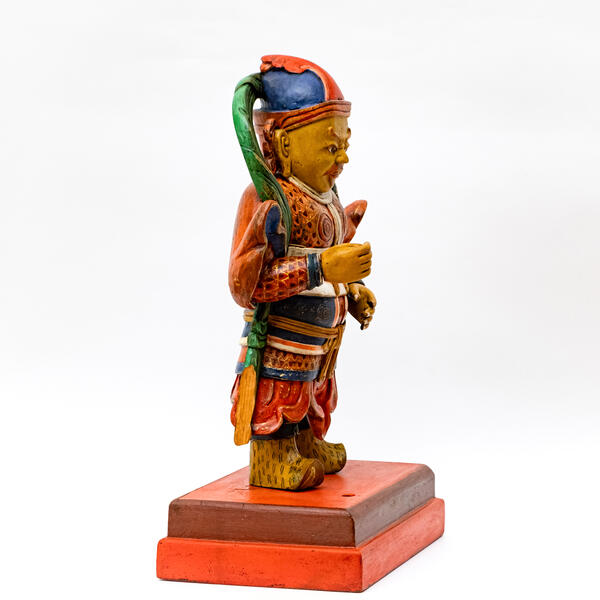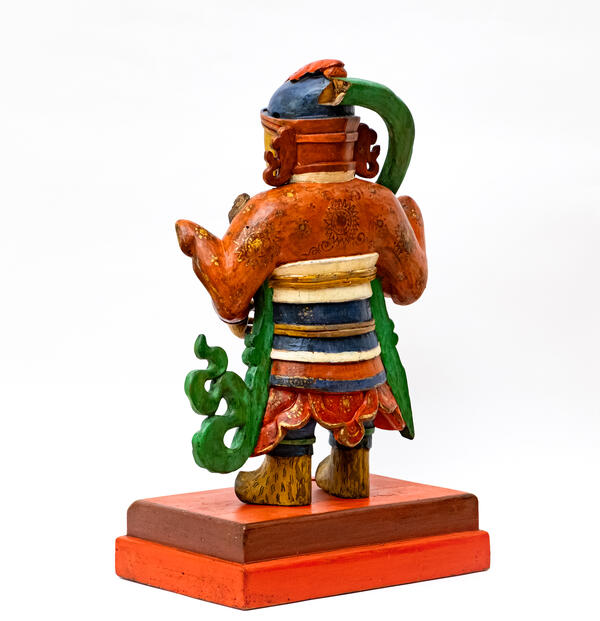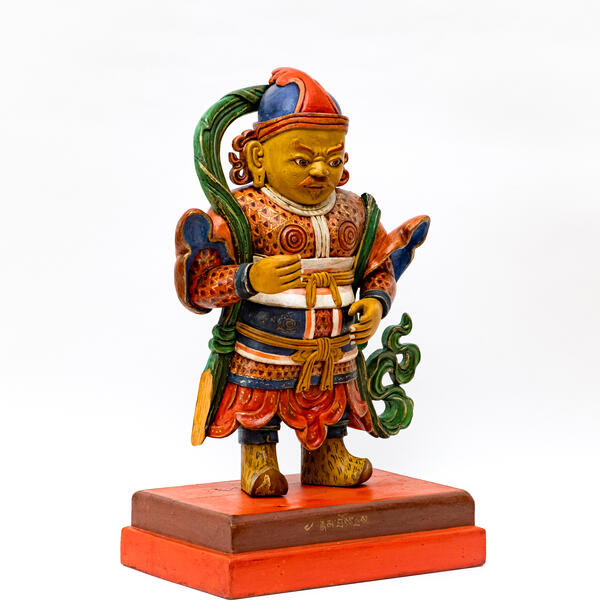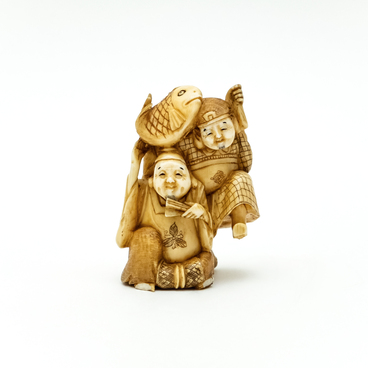In Buddhist mythology, the fantastic mount Sumeru (Meru) serves as a model of the world, the cosmic center of the universe. It determines the location of the cardinal directions, which are protected by the guardians who defend the heavens from all kinds of evil that tries to enter the pure realms. The colorful sculpture, carved from wood, with a heavy torso, short limbs and a fierce facial expression, represents one of the four guardians of the directions — Maharaja Vaishravana, the guardian of the North. He is often depicted in warrior armor on the outer walls of monasteries and temples, along with three other defenders of the cardinal directions. The exhibit is included in the section “Art of the East.”
The universe is full of many heavens; Vaishravana, as a protector from all negative things, rules the sky, safeguarding ordinary people from harm. It is traditionally believed that Vaishravana (also known as Kubera) is the God of wealth, under whose command millions of yakshas (dwarves) store untold treasures in the earth and caves. His name means All-hearing; his attributes are an umbrella and a mongoose spewing jewels (not preserved). These symbols were especially popular among believers, they could be seen in monasteries and in the homes of lay people. The great king — guardian of heaven — isdepicted as a commander clad in ceremonial armor. On his head is a round cap, on his feet are Mongolian-style boots. His face expresses determination, restrained anger, readiness to fight back. He has red eyebrows, mustache, and lips, and his eyes are lined in black. His clothes are painted red with abundant golden-colored patterns (yellow colorant), while individual details are painted in green and blue tones.
The sculpture clearly shows the fusion of the
Buddhist canon and the folk interpretation of the image of the deity. There is
an inscription on the pedestal stating that it is Vaishravana. According to the
artist’s intention, the Guardian of the northern side of the world represents a
force capable of resisting the elements. He is a defender of the teachings of
the Buddha and all who follow his path, and he is also revered as the patron of
martial arts. The fact that this is the work of a Mongolian artist can be
established by the clothes, especially the distinctive style of boots with
upturned toes. Folk fantasy endowed its hero with the functions of defender and
protector of believers. The vibrant coloring of the figure indicates the
incorporation of elements of simplicity and folklore into the sculpture.





